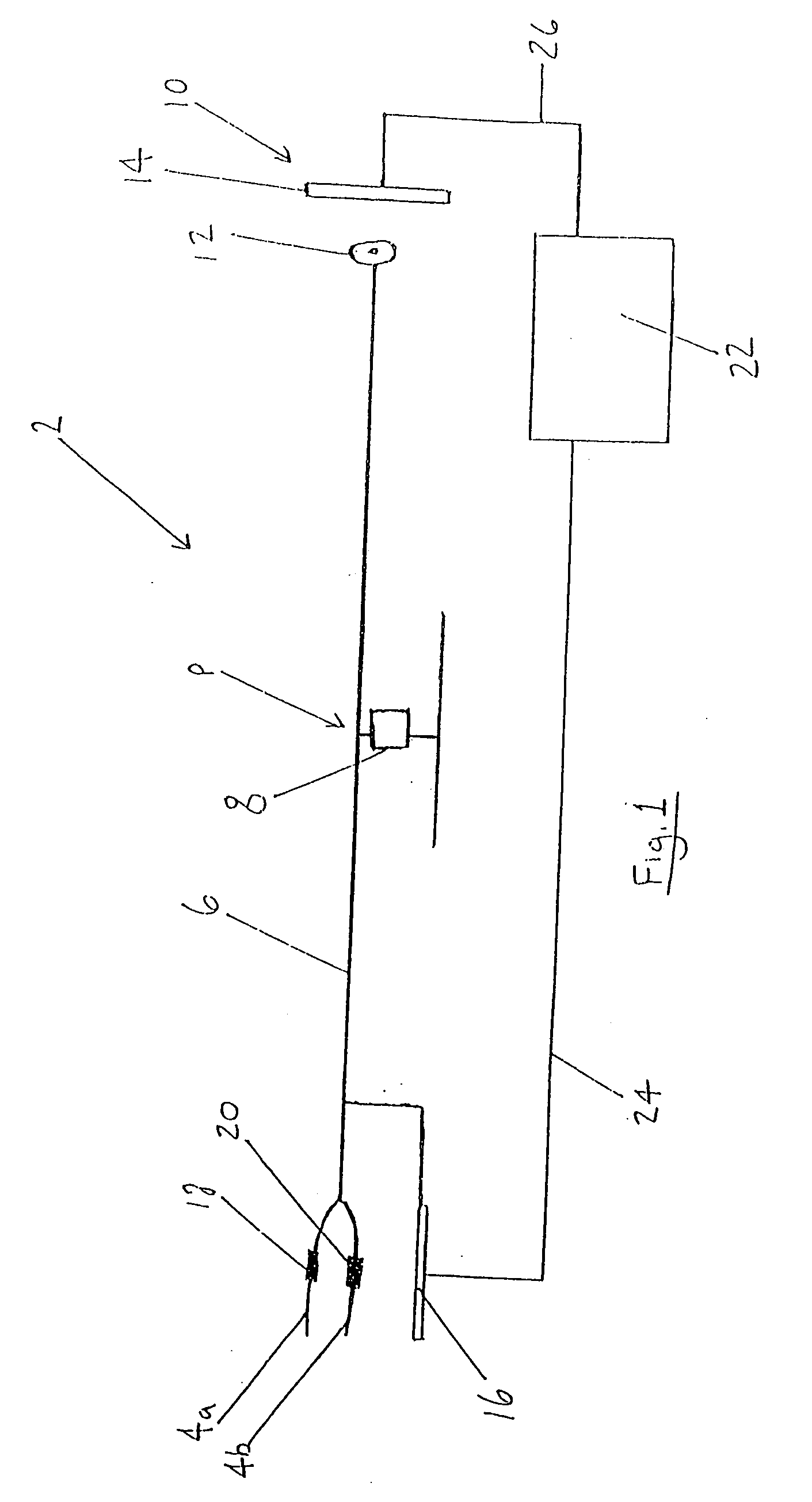Knot tying training apparatus
a training apparatus and knot technology, applied in teaching apparatus, educational appliances, instruments, etc., can solve the problems of increasing difficulty for teachers to determine whether the student has used the appropriate force when tying the knot, damage to the target area in which the knot is tying, and difficulty for teachers to determine whether the student has used the appropriate force, etc., to achieve healthy competition
- Summary
- Abstract
- Description
- Claims
- Application Information
AI Technical Summary
Benefits of technology
Problems solved by technology
Method used
Image
Examples
Embodiment Construction
[0029] The knot tying training apparatus 2 comprises two knot tying elements in the form of a pair of prongs 4a, 4b. In an alternative embodiment the apparatus may comprise a single knot tying element which may be in the form of a single prong or ring. The prongs 4a, 4b are substantially parallel along at least a part of their length and the free ends are movable towards and away from one another. The ends of the prongs 4a, 4b opposite the free ends are attached to a body member 6. The body member 6 is connected to a support stand 8 at a fixed pivot point P. The prongs 4a, 4b and the body member 6 are pivotable about the point P under the influence of forces applied during the process of tying a knot around the prongs 4a, 4b. The prongs 4a, 4b and the body member 6 are free to rotate about their x, y and z (into page) axes. The apparatus 2 is predominantly configured to monitor rotation about the y and z axes. Rotation about the x axis can generally be tolerated.
[0030] Sensing mean...
PUM
 Login to View More
Login to View More Abstract
Description
Claims
Application Information
 Login to View More
Login to View More - R&D
- Intellectual Property
- Life Sciences
- Materials
- Tech Scout
- Unparalleled Data Quality
- Higher Quality Content
- 60% Fewer Hallucinations
Browse by: Latest US Patents, China's latest patents, Technical Efficacy Thesaurus, Application Domain, Technology Topic, Popular Technical Reports.
© 2025 PatSnap. All rights reserved.Legal|Privacy policy|Modern Slavery Act Transparency Statement|Sitemap|About US| Contact US: help@patsnap.com


